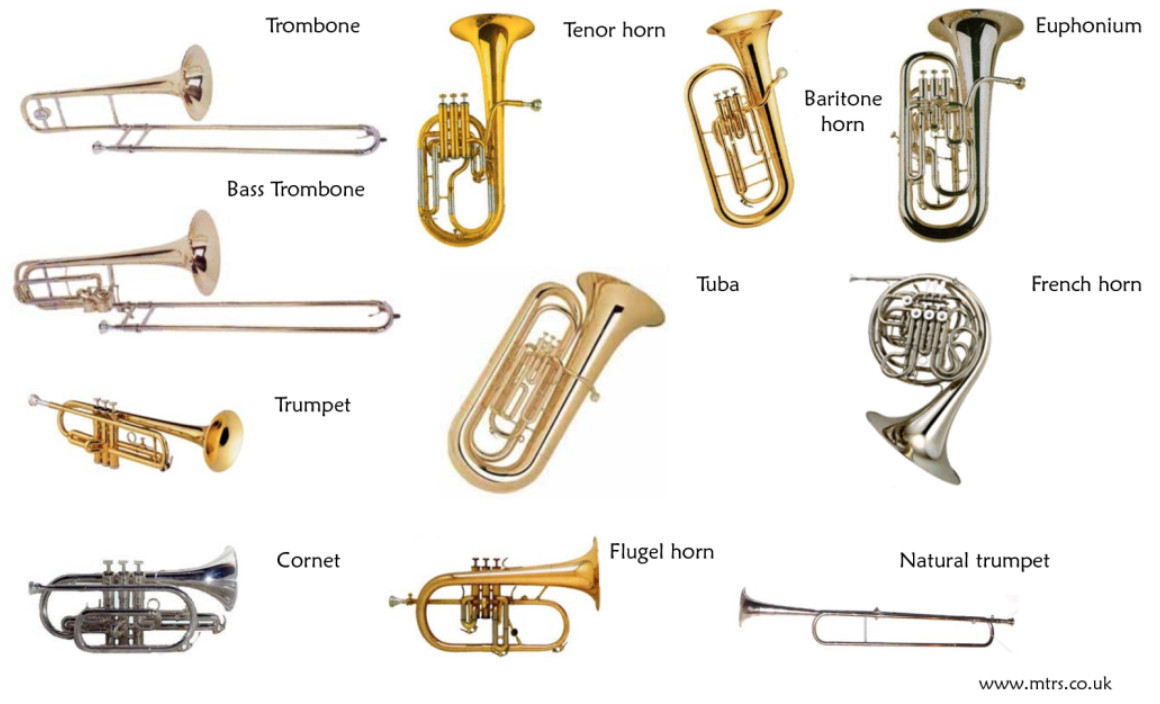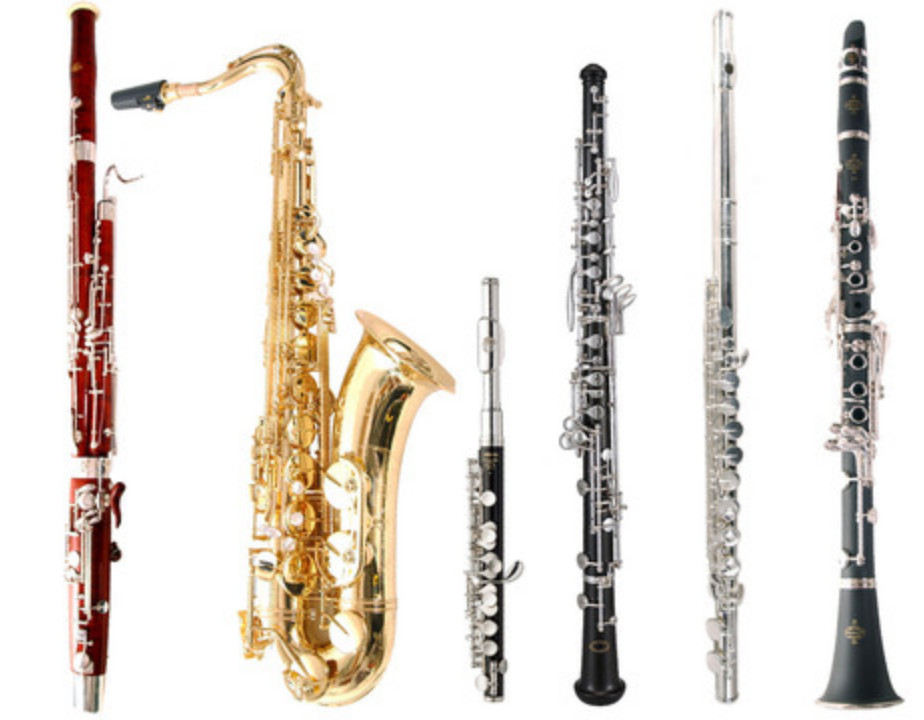Have you ever listened to an orchestra and wondered how so many different sounds come together to create music? One of the fundamental ways to understand the orchestra, and music in general, is by exploring Instrument Families. Just like families of people, instrument families share common characteristics, particularly in how they produce sound. Understanding these families can deepen your appreciation for music and make learning about instruments much more engaging, especially for young learners.
There are four primary instrument families that form the backbone of an orchestra and encompass a vast array of musical instruments worldwide: Brass, Woodwinds, Strings, and Percussion. Each family boasts a unique method of sound production and a distinct tonal quality, or timbre, that contributes to the rich tapestry of orchestral music. Let’s dive into each of these fascinating families and discover what makes them special.
The Bold and Bright Brass Family
A vibrant display of brass instruments: a trombone, tuba, trumpet, and French horn, showcasing the diverse shapes within the brass instrument family.
The brass family is known for its powerful and resonant sound, often described as bright and majestic. Instruments in this family, such as the trumpet, trombone, French horn, and tuba, are all crafted from metal, which visibly unites them. However, the real defining characteristic of brass instruments lies in how they create sound.
Brass instruments are classified as aerophones, meaning they produce sound when air is blown into them. But it’s not just blowing air; brass instruments require a unique technique: buzzing the lips. Players use their embouchure – the way they shape their mouth and lips – to create a buzz against the mouthpiece. This buzzing vibration is what sets the air column inside the instrument in motion, generating sound. Try buzzing your lips together to get a feel for how brass players initiate sound!
The pitch on a brass instrument is changed in a couple of ways. Firstly, adjusting the lip buzz, by tightening or loosening the embouchure, allows players to produce different notes within the overtone series. A simple bugle, without valves, relies solely on embouchure changes to play different notes. More complex brass instruments incorporate valves or a slide. Valves, found on trumpets and French horns, and slides, used on trombones, lengthen or shorten the instrument’s tubing. This alteration of tube length enables musicians to play a full chromatic scale and a wider range of notes beyond the overtone series.
Interestingly, the material isn’t the defining factor anymore. Modern innovations have even introduced plastic brass instruments, like the pBone or pTrumpet. These instruments are lightweight, durable, and perfect for beginners, proving that the “brass” family is truly defined by the buzzing lip embouchure, not necessarily the metal material itself. Developing a keen ear is crucial for brass players, as they must precisely control their embouchure to hit the correct pitch. Music education programs that emphasize ear training can be incredibly beneficial for aspiring brass musicians.
The Versatile and Expressive Woodwind Family
A collection of woodwind instruments, including a flute, clarinet, oboe, and saxophone, showcasing the variety of shapes and mechanisms within the woodwind family.
The woodwind family, also aerophones, presents a wide range of sounds and appearances. This family includes instruments like the flute, clarinet, oboe, bassoon, and saxophone. The name “woodwind” might lead you to believe they are all made of wood, and historically, that was indeed the case.
While many woodwinds were originally crafted from wood, modern instruments can also be made of metal, plastic, or resin. The saxophone, invented around 1840, is a prime example; although typically made of brass, its sound-producing mechanism firmly places it in the woodwind family, not brass.
The unifying factor for woodwinds is their method of sound generation: vibration created by air passing a reed or an edge. Unlike brass instruments that rely on lip buzzing, woodwinds primarily use a thin piece of material called a reed. When air is blown across the reed, it vibrates rapidly, creating sound. Clarinets and saxophones use a single reed, while oboes and bassoons utilize two reeds together, known as a double reed. Interestingly, flutes and piccolos belong to the woodwind family but don’t use reeds. In these instruments, sound is produced when air is blown across a sharp edge, creating vibrations within the instrument’s body.
The woodwind family is incredibly versatile, capable of producing a wide spectrum of tones, from the bright, airy sound of a flute to the rich, mellow tones of a clarinet and the nasal, expressive sound of an oboe. This versatility makes them essential in orchestras, concert bands, and various genres of music.
The Expressive and Melodic String Family
A harmonious gathering of string instruments: a violin, viola, cello, and double bass, illustrating the varying sizes and shapes within the string instrument family.
The string family, also known as chordophones, creates music through vibrating strings. Familiar members include the violin, viola, cello, double bass, harp, and guitar. The strings themselves are made from materials like nylon, steel, or gut, stretched tightly over a hollow body. This hollow construction is crucial as it allows the vibrations of the strings to resonate and amplify, producing a richer, fuller sound.
The most common way to play string instruments in an orchestral setting is by drawing a bow across the strings. These bows are traditionally made with a wooden handle and horsehair strings. The friction between the bow hair and the instrument’s strings sets them vibrating, producing sustained, singing tones. However, strings can also be played in other ways. Plucking the strings with fingers, known as pizzicato, creates a short, percussive sound. Musicians can also tap the strings with the wooden part of the bow, creating a percussive effect.
String instruments are celebrated for their expressive and melodic capabilities. They can produce a vast range of emotions, from soaring melodies to deep, resonant bass lines. Their versatility and expressive range make them a cornerstone of orchestral and chamber music, as well as popular music genres worldwide.
The Rhythmic and Colorful Percussion Family
A diverse array of percussion instruments, including drums, cymbals, and a xylophone, showcasing the varied shapes and sound production methods of the percussion family.
The percussion family is perhaps the most diverse and rhythmically driven of all instrument families. Percussion instruments create sound when struck, shaken, or scraped. This broad category encompasses idiophones, which produce sound from the vibration of their own material (like xylophones and cymbals), and membranophones, which use a stretched membrane or skin to create sound (like drums and tambourines). The list of percussion instruments worldwide is extensive, ranging from bongos and bass drums to xylophones, cymbals, tambourines, maracas, gongs, and even the piano!
Yes, the piano is often classified as a percussion instrument! While it has strings like the string family, the piano produces sound by hammers striking those strings when keys are pressed. This hammer action, as opposed to bowing or plucking, places it within the percussion family, specifically as a pitched percussion instrument. Pitched percussion instruments, like the xylophone, marimba, and timpani, can play specific notes and melodies, unlike unpitched percussion which primarily provides rhythm and texture.
Interestingly, percussion is not limited to instruments we typically think of. Our own bodies can be percussion instruments! Hand-clapping, finger-snapping, foot-stomping – these are all forms of body percussion, making it the most accessible and fundamental form of musical expression. Encouraging children to explore rhythm through body percussion is a fantastic foundation for learning any musical instrument.
Timbre: The Unique Voice of Each Family
Just as each family of people might have a distinct accent, each instrument family possesses its own unique sonic “accent,” known as timbre. Timbre, often called tone color, is the characteristic quality of a musical sound that distinguishes one instrument from another, even when playing the same note. It’s what allows you to easily differentiate the sound of a trumpet from a flute or a violin from a drum.
Timbre plays a crucial role in musical expression. Composers carefully select instruments based on their timbre to evoke specific emotions, create atmosphere, and represent characters or ideas in their music. For example, in Sergei Prokofiev’s famous orchestral piece Peter and the Wolf, each character is represented by a different instrument with a distinct timbre: the cat by a clarinet, the grandfather by a bassoon, the duck by an oboe, the bird by a flute, and the wolf by a French horn. Listening to how these instruments “voice” their characters beautifully illustrates the power of timbre in storytelling through music.
Understanding instrument families and their unique timbres opens up a richer and more nuanced way of listening to and appreciating music. By recognizing the characteristics of each family, you can begin to identify the individual “voices” within an ensemble and understand how composers use these voices to create musical landscapes and narratives.





